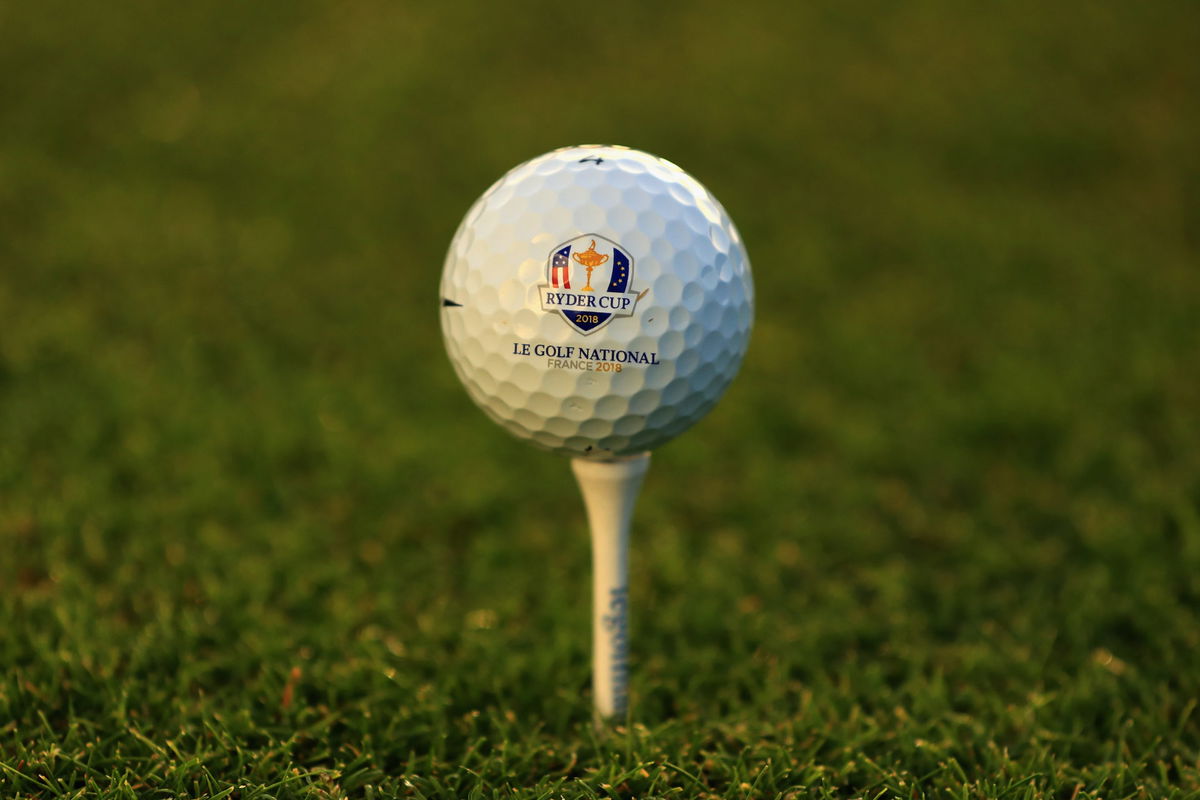
Getty
PARIS, FRANCE – OCTOBER 16: A detailed view as a Ryder Cup golf ball is pictured on the tee during the Ryder Cup 2018 Year to Go event at Le Golf National on October 16, 2017 in Paris, France. (Photo by Andrew Redington/Getty Images)

Getty
PARIS, FRANCE – OCTOBER 16: A detailed view as a Ryder Cup golf ball is pictured on the tee during the Ryder Cup 2018 Year to Go event at Le Golf National on October 16, 2017 in Paris, France. (Photo by Andrew Redington/Getty Images)
USGA CEO Mike Whan decided it was time to clear some air. The chief executive has been in the thick of it all since R&A and USGA announced the golf ball rollback policy early this month, igniting fresh controversies. Whan explains the need for the drastic change, calling the earlier golf testing method, “obsolete.”
Watch What’s Trending Now!
There was skepticism about the necessity of the golf ball rollback policy. PGA Tour pros, such as Justin Thomas called it a selfish decision, whereas golf ball manufacturers dubbed it as irrational. However, the R&A and USGA jointly announced that they are going ahead with the proposal. This time, the USGA chief, speaks on the matter with The Golfer’s Journal podcast.
Top Stories
Who Is Charley Hull’s Ex-Husband? Is LPGA Star Currently Dating?

Pro Suffers Disqualification at PGA Tour Q-School After Several Players Withdrew Abruptly

Golf World Feels Sorry for PGA Tour Hopeful as Meltdown Over Q-School Stress Is Caught on Camera

Brooks Koepka Takes up New Role Amid LIV Golf Exit Rumors Reaching Boiling Point

Donald Trump Puts Public Golf Courses on Notice Amid Control Dispute

ADVERTISEMENT
Whan has his reasons for the golf ball rollback policy
Currently, the golf ball is tested at 120 mph clubhead speed, which roughly translates to 175mph ball speed. However, Whan says, “If you take the top 25 guys on the PGA Tour, … their average ball speed is over 183.” So, by the time the policy takes into effect in 2028, even the “183 ball speed we’re going to be tested at will be dated.” Regardless, this offers a bedrock on which they build on top in the future.
Some PGA Tour pros such as Tiger Woods, Rory McIlroy, and most recently John Daly, have said the change was long overdue. Echoing similar sentiments, the USGA CEO admits that the current “testing is simply obsolete relative to today’s game.” However, that was not the most important reason.
USGA and R&A earlier said the key reason behind this decision is achieving sustainability. Apparently, the distance the golf ball is traveling has forced it to expand the course size. They had to act and act quickly. Drawing an interesting parallel, The former LPGA chief said, “It’s like the cop sitting in the school zone, I am making sure you’re driving at 25, but I’m paying no attention to what you’re doing on the highway.”.
ADVERTISEMENT
Tomorrow on TGJ Podcast:
USGA CEO Mike Whan sits down with @coynewriter to discuss rolling back the golf ball, sustainability and the future of the game. pic.twitter.com/IEPm40twaM
— The Golfer's Journal (@GolfersJournal) December 18, 2023
As per their reports, most professional golfers will see a reduction of 13-14 yards in their driving distance. But how will it affect the amateurs and recreational golfers? Mike Whan sounded positive about this.
ADVERTISEMENT
Recreational golfers won’t be severely affected
As per the official announcement, amateur golfers will have a distance reduction of 4-5 yards. However, recreational golfers have till 2030, to adapt to the changes. So, an average golfer with a 90-95 mph clubhead speed won’t have to make massive changes in their game due to the golf ball rollback policy.
Read More: Will USGA and R&A’s Rollback Policy Affect LIV Golfers?
ADVERTISEMENT
Speaking on the matter, the Chief executive said, “We’re not building a test that is gonna be capped out for you.” Notably, top amateurs will step onto uncharted territory at the same time as professional golfers in 2028.
Watch This Story: USGA and R&A Tips Their Hats in Favor of Ball Rollback Despite Huge Outcry Against the Controversial Policy
ADVERTISEMENT
ADVERTISEMENT
ADVERTISEMENT

